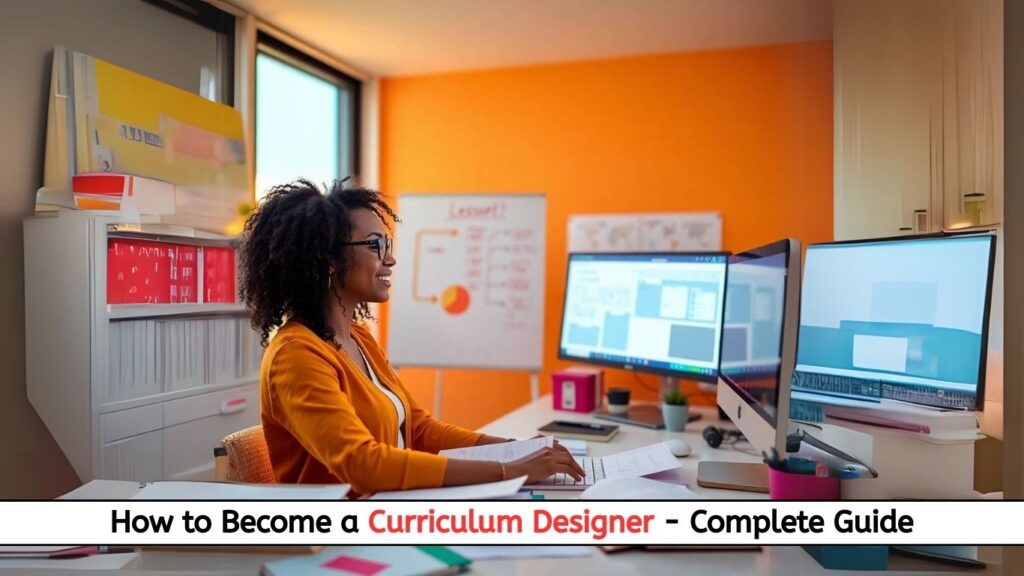
Introduction
In today’s rapidly evolving educational landscape, Curriculum Designers play a pivotal role in shaping effective learning experiences. Whether for K-12 schools, higher education, or corporate training, these professionals combine pedagogical expertise with strategic planning to create impactful educational programs.
This comprehensive guide covers:
✅ The Evolution of Curriculum Design
✅ Salary Expectations Across Sectors
✅ Core Roles & Responsibilities
✅ Essential Qualifications & Skills
✅ Step-by-Step Career Path
✅ Future Trends & Job Outlook
Let’s explore this rewarding career in depth!
1. The History of Curriculum Design
Early Foundations (19th Century)
- 1800s: Standardized education systems emerged during the Industrial Revolution
- 1892: The “Committee of Ten” established the first standardized high school curriculum in the U.S.
Progressive Era (Early 20th Century)
- 1918: Franklin Bobbitt published “The Curriculum,” founding modern curriculum theory
- 1930s-40s: Ralph Tyler developed the “Tyler Rationale” (objectives-based design)
Modern Developments
- 1950s-60s: Bloom’s Taxonomy revolutionized learning objectives
- 1980s-90s: Standards-based reform movements (e.g., No Child Left Behind)
- 2000s-Present: Digital transformation and competency-based education
Today’s curriculum designers must balance traditional pedagogy with emerging technologies and diverse learner needs.
2. Salary Expectations for Curriculum Designers
| Experience Level | Average Salary (Annual) |
|---|---|
| Entry-Level (0-2 yrs) | $45,000 – $60,000 |
| Mid-Career (3-7 yrs) | $60,000 – $85,000 |
| Senior-Level (8+ yrs) | $85,000 – $120,000 |
| Lead/Managerial | $100,000 – $150,000+ |
By Sector:
- K-12 Education: $50,000 – $80,000
- Higher Education: $60,000 – $95,000
- Corporate Training: $70,000 – $110,000
- Government/Nonprofit: $55,000 – $90,000
- Freelance/Consulting: $50-$150/hour
Note: Salaries vary by location, with major metro areas offering 20-30% higher compensation.
3. Key Roles & Responsibilities
Core Functions:
- Needs Assessment
- Analyze learner demographics and institutional goals
- Conduct gap analyses between current and desired outcomes
- Curriculum Development
- Design scope and sequence for courses/programs
- Create learning objectives aligned with standards (e.g., Common Core, ISO)
- Develop assessment strategies (formative/summative)
- Instructional Material Creation
- Design lesson plans, activities, and resources
- Integrate multimedia and technology tools
- Ensure accessibility (WCAG, ADA compliance)
- Implementation Support
- Train educators on curriculum delivery
- Monitor adoption and effectiveness
- Evaluation & Revision
- Collect and analyze learning data
- Continuously improve curriculum based on feedback
Specialized Roles:
- Subject Matter Specialist (e.g., STEM curriculum designer)
- Digital Curriculum Developer (e-learning focus)
- Corporate Training Designer (workplace skills development)
4. Essential Qualifications & Skills
Educational Requirements:
- Minimum: Bachelor’s in Education, Instructional Design, or related field
- Preferred: Master’s in Curriculum & Instruction or Educational Technology
- Valuable Certifications:
- Association for Supervision and Curriculum Development (ASCD)
- International Board of Standards for Training, Performance and Instruction (IBSTPI)
- Quality Matters (for online course design)
Technical Skills:
✔ Learning Management Systems (Canvas, Blackboard, Moodle)
✔ Authoring Tools (Articulate 360, Adobe Captivate)
✔ Data Analysis (Excel, Tableau, LMS analytics)
✔ Basic HTML/CSS (for digital curriculum)
Soft Skills:
✔ Strong written and verbal communication
✔ Project management (Agile, Trello, Asana)
✔ Creative problem-solving
✔ Cultural competency
5. How to Launch Your Career
Step 1: Build Your Foundation
- Earn a relevant degree or complete certificate programs (e.g., Coursera’s “Curriculum Design”)
- Gain teaching/training experience (classroom or corporate)
Step 2: Develop Practical Skills
- Volunteer to design curriculum for nonprofits or community programs
- Create sample curricula for portfolio (align with Common Core or other standards)
Step 3: Gain Professional Experience
- Start as a teacher transitioning into curriculum roles
- Entry-level positions: Curriculum Assistant, Instructional Designer
Step 4: Specialize & Advance
- Pursue niche areas (e.g., ESL, STEM, corporate compliance training)
- Move into leadership: Curriculum Director, Learning Experience Manager
Step 5: Continuous Learning
- Join professional organizations (ASCD, ATD)
- Attend conferences (Learning Solutions, ISTE)
6. Future Trends & Job Outlook
Emerging Trends:
🔮 AI-Powered Personalization – Adaptive learning paths
🔮 Micro-Credentials – Stackable, skill-based certifications
🔮 Immersive Learning – VR/AR integration
🔮 Competency-Based Education – Mastery-focused progression
Job Growth:
- 11% projected growth (2020-2030) – Faster than average (BLS)
- High demand in:
- Corporate upskilling/reskilling programs
- Online/charter schools
- Healthcare and tech training
Conclusion: Is Curriculum Design Right for You?
This career is ideal for those who:
✓ Love both education and strategic planning
✓ Enjoy creative problem-solving
✓ Want to impact learning at scale
Pro Tip: Start by redesigning one unit or module in your current role to build experience.
Ready to Begin?
📌 Explore free resources from ASCD and Edutopia
📌 Connect with curriculum designers on LinkedIn













Post Comment